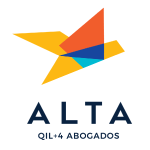Drone Regulation in Guatemala
The word “drone” in the English language refers to a male bee that mainly has fertilization duties. It also means a low continuous humming sound, just like the sound of a flying bee. But now, “drone” is also the common name given to flying vehicles remotely controlled by an operator, which are regulated under the “Unmanned Aerial Vehicles, Aircraft Modeling and Fireworks Regulation – RAC 101” (in Spanish, Regulación de Aeronaves No Tripuladas, Aeronaves de Modelismo y Fuegos Artificiales – RAC 101) enacted by the Civil Aeronautical General Authority of Guatemala (in Spanish, Dirección General de Aeronáutica Civil) or commonly referred to as “DGAC” for its acronym in Spanish. Such regulation is based on international rules and standards on the subject matter. [1]
Pursuant to the RAC – 101 Regulation, the general principle is that all drones/UAV have to be registered and authorized by the DGAC, although some registration exceptions and criteria apply depending on the type of the device, flying capacity and above ground level capability. As per informed by the DGAC, [2] until now there are about 295 drones registered in Guatemala that mostly are used for commercial and industrial purposes.
The RAC – 101 Regulation, among other topics, establishes the requirements for filing a drone’s registration and authorization request at the DGAC, defines certain technical terms applicable to aeronautic regulation, determines the authorized and prohibited areas for the operation of drones, instructs on prohibited operations, illegal interference situations, distinctions between regular or constant operation vs. non-regular or sporadic operation of these devices, and provides specific rules for the use of drones for commercial means, including the requirement to obtain an operation certificate or exploitation certificate extended by the DGAC for certain cases.
An interesting aspect of the RAC – 101 Regulation is the express prohibition for drone operation 400 feet above ground level within 3 nautical miles from any airport, heliport, landing strip or any other place with air traffic (though exceptionally allowing it under specific circumstances). Since such Regulation is based on international standards and norms, as per informed by the DGAC, some of the more recent and modern drones already include software limitations that restrict its user from flying in such places. Flying at night hours is also prohibited on a general basis.
Notwithstanding the above, as per the RAC – 101 Regulation the operation of an UAV for sport or recreational purposes is permitted if conducted outside populated areas, below 400 feet above ground level and in compliance with such Regulation norms under the user´s full responsibility.
Finally, the key for the RAC – 101 Regulation’s compliance and enforcement in Guatemala requires general dissemination and communication. Until now, drone users and the general public seem not to be aware of such Regulation existence due to its scarce diffusion.


 Post a comment
Post a comment Print article
Print article

